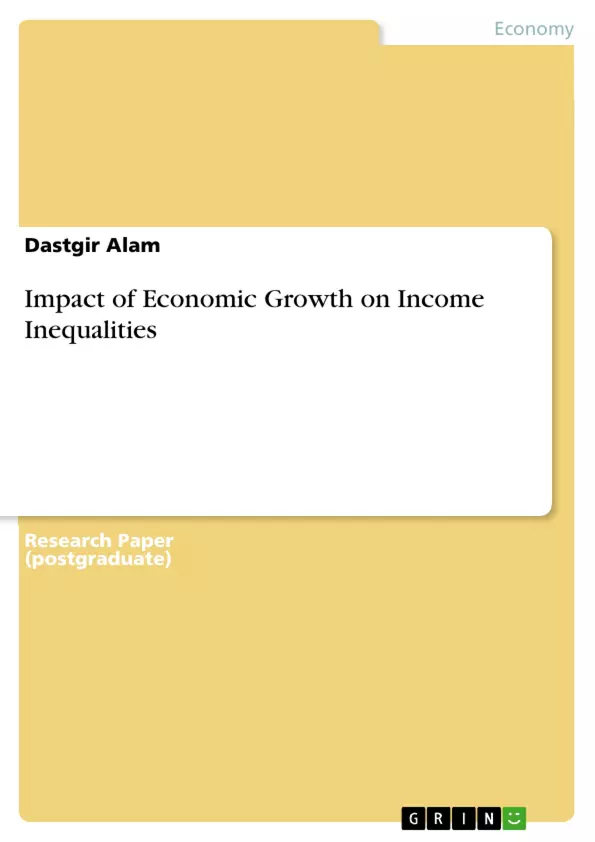Abstract
Since the ages inequalities in income distribution have been both a fact and a major cause of concern for world community. India, being a part of this world also suffers from this problem. To solve it India started the process of planning in 1950 and since then planners are making their best efforts to reduce the prevalence of income inequalities. The present study revealed that in comparison to rural areas, the problem of income inequalities has always been higher in urban areas. In rural areas economic growth is proved very important in solving the problem of inequalities but only before the economic reforms. After the economic reforms, economic growth has failed to address the problem of inequality in income distribution. The study has further found that in urban areas, it is not the economic growth but the differential growth of the various sectors which is affecting the level inequalities in income distribution.
Key Words:
Inequalities, Income Distribution, Income Inequalities, Economic Growth, Economic Reforms, Differential Growth.
Inhaltsverzeichnis (Table of Contents)
- Introduction
- Theoretical Background
- Indian Scenario
Zielsetzung und Themenschwerpunkte (Objectives and Key Themes)
This paper aims to explore the impact of economic growth on income inequality in India, particularly focusing on the distribution of gains from economic growth over the past 60 years, including the period following economic reforms. The author seeks to identify which segments of society have benefitted most from the increase in national income and wealth and whether income distribution has improved.
- The relationship between economic growth and income inequality.
- Different theoretical perspectives on the impact of inequality on economic growth.
- Analysis of income distribution trends in India, particularly in relation to economic planning and reform.
- The role of government policies and programs in addressing income inequality.
- The effectiveness of the "trickle-down" theory in reducing poverty and inequality.
Zusammenfassung der Kapitel (Chapter Summaries)
- Introduction: This chapter provides an overview of the relationship between income distribution and economic welfare, highlighting India's commitment to economic planning since 1950. It establishes the importance of understanding how economic growth impacts income inequality and the need to investigate the distribution of gains from growth in India.
- Theoretical Background: This chapter examines different theoretical perspectives on the relationship between economic growth and income inequality. It explores the views of Marx, Classical economists, Neoclassical theorists, Keynes, and modern theorists, highlighting their arguments and presenting contrasting viewpoints on the impact of inequality on economic growth.
- Indian Scenario: This chapter focuses on India's approach to addressing income inequality through economic planning. It highlights the emphasis on balanced development, the role of heavy and basic industries, and the government's socialized economic policies aimed at reducing inequalities. The chapter concludes by discussing the shift in focus from pure economic growth to addressing poverty and inequality through the "trickle-down" theory.
Schlüsselwörter (Keywords)
This paper focuses on key concepts like economic growth, income inequality, wealth distribution, economic planning, theoretical perspectives, Indian economy, and the "trickle-down" theory. It explores the impact of economic growth on income inequality in India, analyzing different theories and policy approaches related to income distribution and its relationship to economic development.
- Citar trabajo
- Assistant Professor Dastgir Alam (Autor), 2011, Impact of Economic Growth on Income Inequalities, Múnich, GRIN Verlag, https://www.grin.com/document/178352



